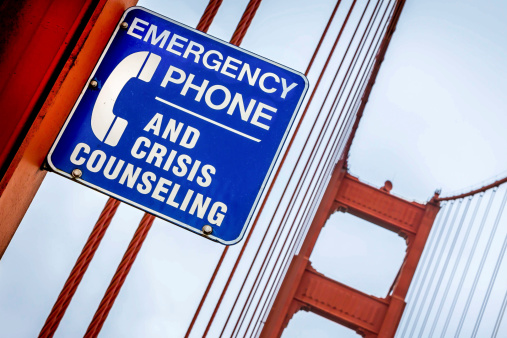 According to a new study published in The Lancet Psychiatry, blocking access to suicide “hotspots” or locations could help reduce suicide rates.
According to a new study published in The Lancet Psychiatry, blocking access to suicide “hotspots” or locations could help reduce suicide rates.
The study, led by professor Jane Pirkis of the University of Melbourne in Australia, suggests that other prevention strategies, such as placing crisis telephones and signage at high-risk suicide locations, can also significantly reduce the number of suicide deaths at these sites.
To investigate their theory, Pirkis and colleagues conducted a review and meta-analysis of 18 studies that assessed the effectiveness of three types of suicide prevention procedures.
The three methods included restricting access to suicide hotspots (installation of barriers or safety nets), promoting “help-seeking” at suicide hotspots (placing telephones that link to suicide help lines), and increasing the chances of a third-party intervention (installing closed-circuit television or implementing suicide patrols).
The team found that all three interventions were successful. There was a significant drop in suicide deaths at high-risk locations. The average was reduced from 5.8 suicide deaths annually—before the interventions were introduced—to 2.4 suicide deaths annually after the interventions were introduced.
Restricting access to common suicide locations, combined with other interventions, led to a 91% annual reduction in suicide rates at high-risk locations. There was a 93% yearly reduction in suicide rates when intervention was used alone.
Interventions that encouraged help-seeking led to a 51% reduction in the number of annual suicides at high-risk locations, when combined with other interventions. On its own, these interventions led to a 61% drop in the number of annual suicides at high-risk locations.
Furthermore, raising the likelihood of third-party interventions, combined with other interventions, reduced the number of annual suicides at high-risk locations by 47%.
Suicide is the tenth leading cause of death in the U.S. More than 40,000 suicides were reported in 2013.
Sources for Today’s Article:
Pirkis, J., et al., “Interventions to reduce suicides at suicide hotspots: a systematic review and meta-analysis,” The Lancet Psychiatry September 23, 2015, doi: http://dx.doi.org/10.1016/S2215-0366(15)00266-7.
Whiteman, H., “Blocking access to ‘suicide hotspots’ could reduce suicide numbers by over 90%,” Medical News Today web site, September 23, 2015; http://www.medicalnewstoday.com/articles/299870.php.
